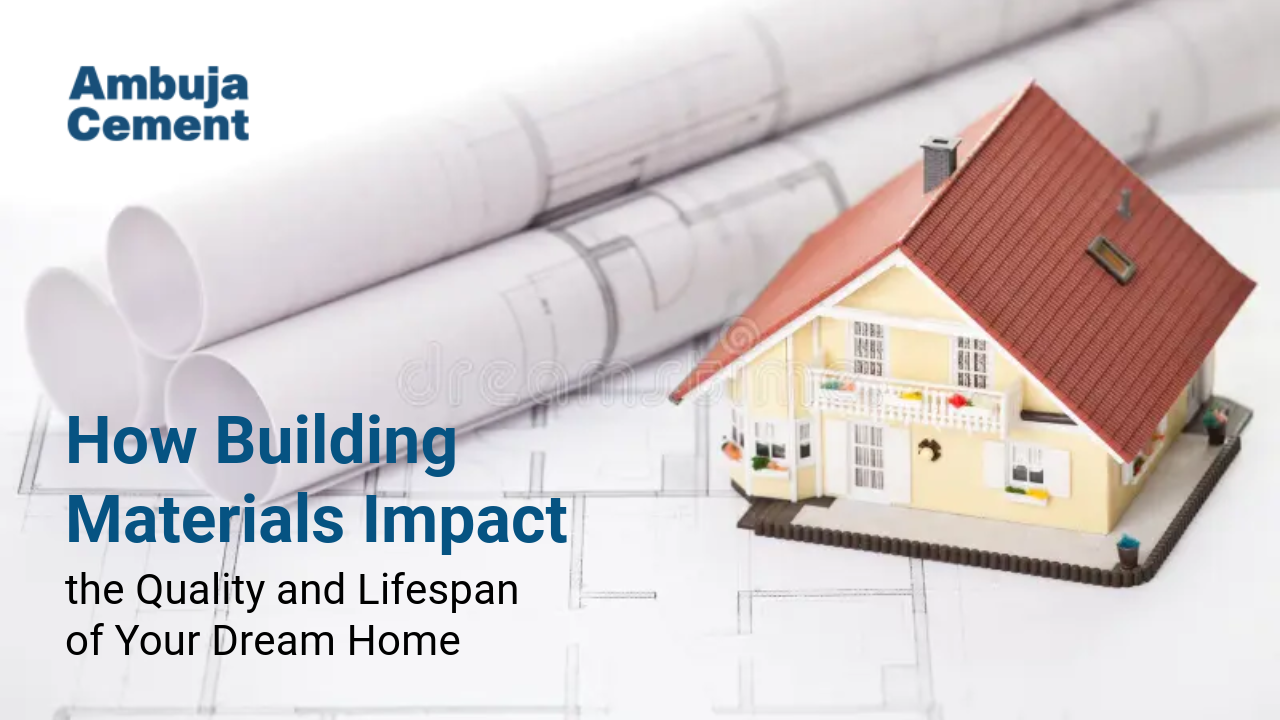How Building Materials Impact the Quality and Lifespan of Your Dream Home

Table of Content
Building a home is one of the most exciting and equally overwhelming journeys you'll take. But while it’s easy to get caught up in choosing floor plans, paint colors, or kitchen fittings, your house's real beauty and strength lie in something far less glamorous: building materials.
Yep, those basic elements like cement, steel, and wood are what determine whether your home stands tall for decades or crumbles under pressure.
Let’s break it down in a friendly, no-nonsense way, so you can make smarter choices that’ll pay off for years.
The Foundation of Everything: Why Materials Matter
It’s a fact that it’s the ingredients that determine how a product turns out—too much or too little of even a single element, and it’s a disaster. The same logic applies to your house. The housing raw materials you pick affect how well your home holds up to weather, time, and everyday damage.
Your choice of materials doesn't just affect strength. It impacts everything from resistance to heat to resistance against damp, pollution, and even termites. That’s why it’s important to understand the options out there—and what they bring to the table.
1. Steel
Let’s start with one of the most powerful housing materials out there—steel. If you're building a home with multiple stories or in an earthquake-prone area, steel is your best friend. It’s super strong, can bear heavy weight, and resists pests and fire. The only downside? It can be pricey. But if you're looking for long-term durability, it's well worth the investment.
Stainless steel, in particular, resists corrosion, making it ideal for coastal or humid environments. It's often used in structural frameworks, giving your home a strong frame that won’t buckle under pressure.
2. Cement and Concrete
Cement might not look like much, but it’s the glue holding everything together. When mixed with sand and gravel, it becomes concrete: a fundamental element in any sturdy home. Concrete slabs, beams, and columns form the base and core of your house.
The strength of concrete depends on the mix. That’s why ready-mix concrete is becoming increasingly popular. It’s pre-mixed under controlled conditions to ensure consistent quality, and it's poured directly on-site, taking out the chances of errors and saving time. If you're all about efficiency and long-term stability, this is a win-win.
3. Bricks and Blocks
Bricks have been used for thousands of years—and for good reason. They’re solid, fire-resistant, and great at maintaining indoor temperatures. Plus, they give your home that timeless charm.
Blocks, on the other hand, are modern-day champions. Larger and lighter than bricks, they’re great for faster construction. Depending on the material—whether concrete, clay, or aerated options—they offer excellent insulation and soundproofing too.
4. Wood
Wood adds warmth and personality to a home, both structurally and aesthetically. It's versatile, easy to work with, and when sourced responsibly, it’s also sustainable. But it does need protection. Termites, moisture, and other damages can shorten its lifespan unless it’s treated or used in protected parts of the house.
Still, when used right—for framing, floors, or even accent walls—wood brings a natural charm that no other material can match.
5. Stone
Natural stone is about as durable as it gets. Granite, marble, limestone—each type brings its own strength and character. While heavier than other construction materials, stone offers unmatched resistance to wind, fire, and moisture. It's an ideal choice for exterior walls, walkways, and even fireplaces.
If you're planning a forever home, stone is worth considering for key features.
6. Aggregates and Binding Wire
Aggregates—those little bits of crushed stone, sand, and gravel—might look fragile, but they’re essential. They’re mixed with cement to form concrete and asphalt, providing the bulk and backbone to any structure.
Binding wire, meanwhile, ensures that steel reinforcements stay in place, especially in concrete work. It might seem minor, but without it, the whole structure could be compromised. Think of it as the stitching in your home’s structural fabric.
Choosing the Right Mix
Ultimately, every material has its own role in the grand scheme of your home’s construction. It’s not just about picking the strongest option, but the right combination for your weather, location, and budget. The best homes don’t just look good—they’re built on smart choices that ensure safety, comfort, and longevity.
And remember: not all construction materials are created equal. Always go for trusted brands and suppliers. Do your research. Ask questions. And don’t cut corners—what you save now might cost you double in repairs later.
Final Thoughts
When you're building your dream home, don’t just focus on the surface. Dive deeper into housing raw materials. Think about the materials going into your walls, foundation, and structure. The choices you make today will shape how your home performs—and how long it lasts for generations.
